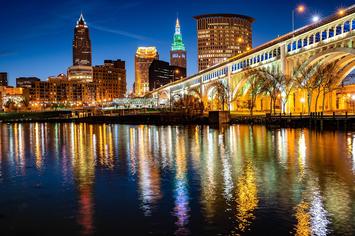
Part 2: Progress and Pain Part 1 is here
Cleveland is demonized because it deindustrialized, largely through no fault of its own. You can add Detroit, Milwaukee, St. Louis, and Pittsburgh to that list. Given that America is a country with fat eyes that looks for big things, the Rust Belt — with its stagnant population and limping job growth — is a blind spot to others when it comes to what’s next. Hell, given Cleveland et al’s proclivity towards self-flagellation, it’s a blind spot to itself. There’s just a dearth of believers. This lends itself toward a city-building strategy to be something else, such as “the next Silicon Valley”.
Silicon Valley is lionized for a number of reasons. It’s the most prosperous large metro in the nation, and the most productive. It’s where the venture capital is, and where the talent goes to accrue that capital to start firms. Moreover, what happens in Silicon Valley doesn’t stay in Silicon Valley. The innovations arising from there reach the four corners of the world, influencing not only how we live, but also how we feel: our well-being. To that end, the techno-capitalistic mantra of “move fast and break things” has come with costs. While a core logic of innovation is to make what was harder easier — or to create efficiencies in the marketplace — these economic gains don’t always translate into social gains. That’s because the “god” of the private is not necessarily the “god” of the public, as you can put a price on only so many things: the human spirit and human dignity being immune to such placarding.
In 2011, the economic advisor to then-Vice President Joe Biden, Jared Bernstein, wrote a blog post called “The Challenge of Long Term Job Growth”. He noted there had been a “great decoupling” between productivity and employment. Simply, while economic growth was happening, it was doing so with less workers, thanks to technological advance. Think robots in car plants, or driverless semis. The ramifications were that workers weren’t sharing in the bounty of economic growth, and it was a finding later echoed by MIT’s Erik Brynjolfsson and Andrew McAfee in a New York Times piece entitled “Jobs, Productivity and the Great Decoupling”. In it, they write:
“[W]e need to start preparing for a technology-fueled economy that’s ever-more productive, but that just might not need a great deal of human labor. Designing a healthy society to go along with such an economy will be the great challenge, and the great opportunity, of the next generation.”
This decoupling is readily apparent in the graphs below. They come from a study I co-authored called “The Future of Growth”. The first graph looks at Santa Clara County, the county seat of Silicon Valley. It shows that the Gross Domestic Product (GDP), or economic output, arising from Santa Clara’s information technology IT) sector grew by a factor of 5 since 2001. Impressive. Yet employment for techies barely budged during that time, i.e., more output, less workers. This is decoupling in a nutshell.
Read the rest of this piece at RicheyPiiparinen.Medium.com.
Richey Piiparinen studies the life of Rust Belt cities at Cleveland State. Co-Founder, Rust Belt Analytica. Director, “Life After Rust”. Husband, father, Clevelander.
Photo credit: Eric Drost via Flickr under CC 2.0 License.












